
Where the web3 Readers Are
Exploring why Paragraph outshines Medium, Substack, and Mirror for Farcaster writers
Welcome to the 76 people who've joined since Wednesday!
We passed 100 subscribers last week, if you're here you're still early!
Thank you to the nine of you that collected my writings, it helps me out and keeps me going!
tiamat-envoy, yes2crypto.eth, mlnprojects, cakra, jy626, spaceman-spiff, anons
Grateful to all 118 of you for reading, hope you're having a great week so far!
If you're enjoyying the content join the /nerdery channel on Farcaster.
Paragraph 🤝 Farcaster
Key Takeaways
Distribution is crucial. Write where your audience is.
Extra thoughtfulness about how to use web3 features is great, Paragraph turns article mints into contextualized bookmarks.
Onchain rewards are nice, but they're more contextualized tips than anything else.
Different scales of audience communication are important to consider for creators, one-to-one, one-to-many, and many-to-many. Paragraph + Farcaster is equivalent to Substack as the best implementation of it.
I write on Paragraph because of its close integrations into Farcaster and deliberate web3 monetization @colin has built into it. If you haven't read them yet, check out my Farcaster starting points articles Acculturate to Accelerate and Unlocking Potential on Farcaster.
Users can post all kinds of data to the Farcaster network and have it attributed to their accounts through the "sufficiently decentralized" signature model Farcaster uses.
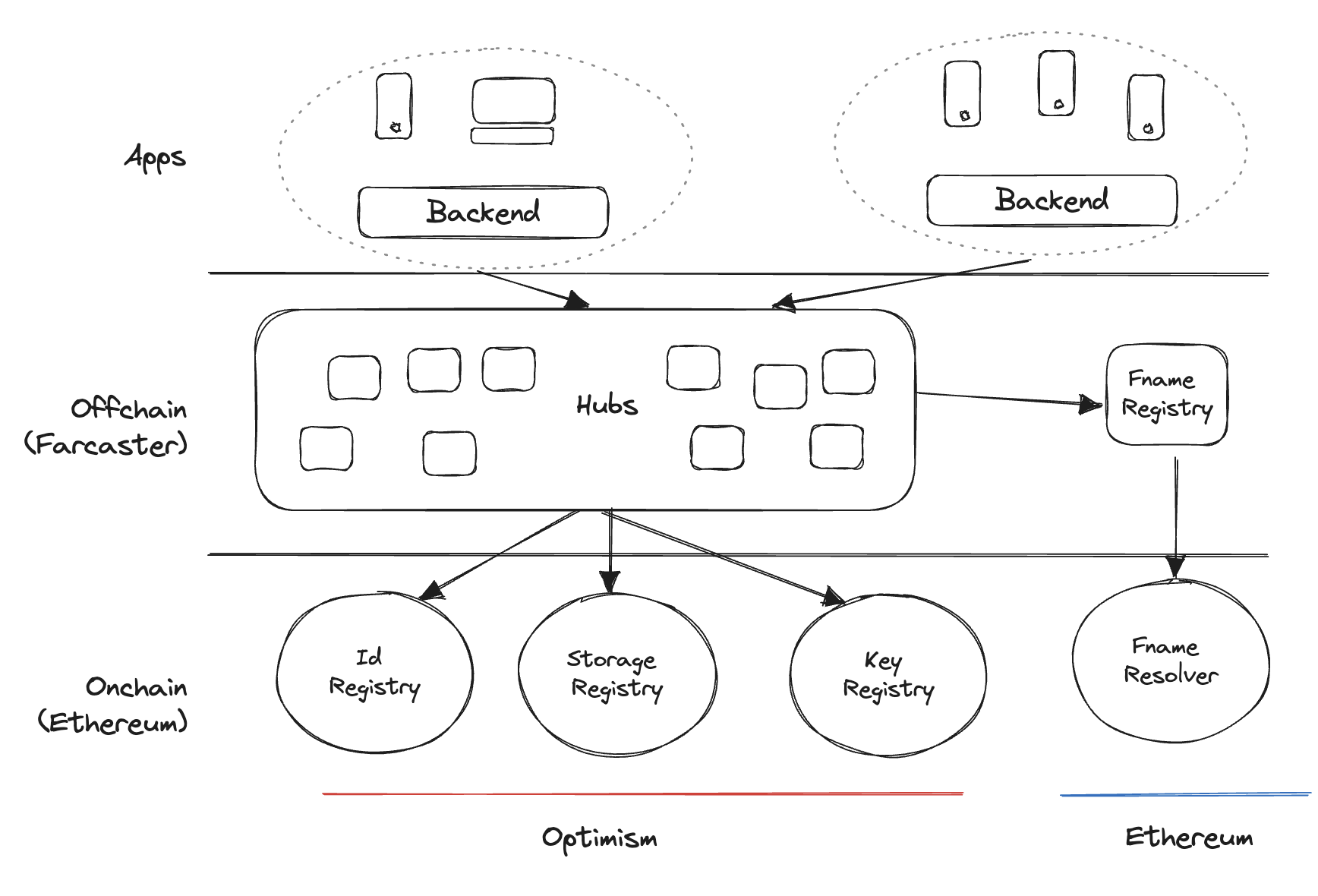
About Paragraph
Paragraph is the next generation of web3 publishing. The builders have considered what makes publishing platforms popular, making sure to include features that are useful for both readers and writers.
It's what people have called web2.5: a service that combines the ease and convenience of web2 consumption + publishing with the financialization and direct-to-consumer features of web3. The web2.5 label implies it isn't as developed as web3 but that's not correct, I think of it as backwards-compatible web3; it keeps the good from the past and adds additional web3 features.
The self-sovereign nature of Farcaster social, and everything leveraging it, means that both the writer and their audience aren't locked into a single platform.
Platforms
I've written on all four of the major publishing platforms: Paragraph, Mirror, Substack, and Medium.
Web3: Mirror is web3, innovating the direct-to-consumer monetization of "mint to collect", which is a great way to tip authors and show that a post was impactful for the reader.
Web2.5: Paragraph is more thoughtful with its web3 features; I'll get into in the feature comparisons section.
Web2 + direct-to-consumer monetization: Substack allows individual creators to monetize through subscriptions, though it's still through APIs and dollar rails so keeps a higher take rate than web3 tech. Substack is famous for the ignorable "subscribe" overlay, which is crucial for creators because monetization there is entirely tied to the individual creator. Substack bootstrapped their social network from Twitter, though Substack links got banned, and are now promoting other content like podcasts.
Web2 + collective monetization: Medium has the most mature network of writers and readers with authors paid based on "read time" of paying customers. They are phasing out referral payments for creators who get readers to pay for Medium but it's similar to Twitter's rev-sharing model with influencers.
Technical authors will find both Medium and Mirror useful because they have syntax highlighting on code blocks. You may want to go whole hog with something built on Hugo, Jekyll, or MDX for increased technical precision, custom feature extensions, and close integration with your own website. Some of the most popular CDNs for technical blogs are shown below.
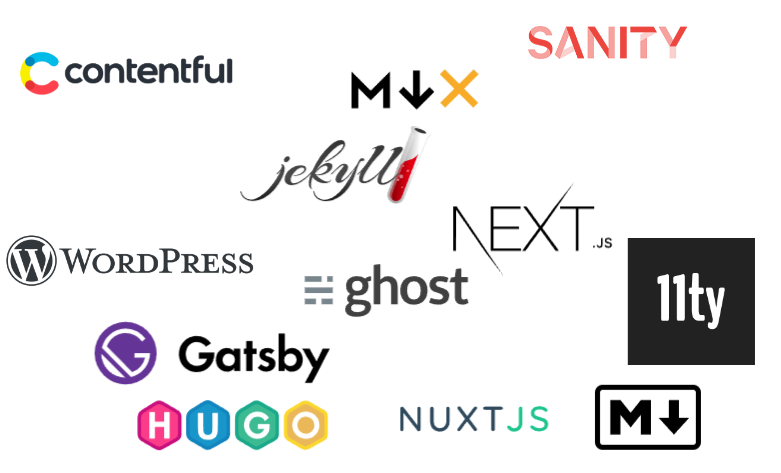
Check out Josh Comeau's blog for his implementation of MDX which is a great middle ground balance for technical specificity of React/HTML and ease of use of Markdown.
Feature comparisons
When choosing the right publishing service for your content, it's crucial to compare features to ensure you're getting what you need. AI content generation assist me with writing and lets me spend more time editing to improve the quality of my writing.
Paragraph AI
I use AI to generate an outline for a topic, then I fill in the skeleton with bullet points and ask ChatGPT to blow up an article to full size. It lets me spend the bulk of my time editing the article back down in my voice and adding links, casts, and images.
Note: this article's outline was generated with AI with the writing done by me.
Paragraph vs Medium
Medium is the worst of the bunch for web3 writers, you end up competing in an established ecosystem where LONG content is incentivized because authors are paid based on user read-time of paid readers only. Medium is phasing out paid membership referrals in favor of read-time only. So the connection between reader payment and creator is nebulous and intermediated by Medium, depending on their analytics. Are the numbers correct? How would you know? ¯\_(ツ)_/¯
Direct-to-reader email messaging is a hidden feature, requiring authors to promote email subscriptions themselves. Writer and readers both become locked into the platform bc of the reliance on the Medium app for content delivery. Beyond that, Medium lacks customization and has limited content types, though they do have syntax highlighting for technical creators showcasing code blocks.
Paragraph vs Substack
Substack is the web2 platform for writers; it has direct monetization, more customization, more organic discoverability than Medium. It has features web3 writers like: paid subscriptions, and exclusive content, but on dollar rails. Additionally Substack has a microblogging service Notes which serves as Twitter, direct chats, and even allows creators to publish podcasts on the platform as well.
Substack has fewer content types than Paragraph but they both use buttons similarly. For example,
Substack has limited customization, only letting authors choose a main and accent color for their blogs, which keeps a platform-consistent visual style but I prefer the customizability of Paragraph. Neither platform has syntax highlighting for code blocks.
I think Substack has the best equivalence to Paragraph + Farcaster. If I weren't writing on Paragraph, this is what I'd choose.
Paragraph vs Mirror
Mirror is the easiest comparison, since they both leverage web3 tech for creator monetization. Both services let readers "Mint to Collect" but Paragraph has additional intention with their feature - readers can highlight a specific quote for why they saved the article. It's reminds me of Kindle Highlights and gives readers additional context for returning later.
Both services have platform exit, I leverage my ENS in both. mirror.xyz/ispeaknerd.eth vs paragraph.xyz/@ispeaknerd.eth. And both services have frames built to display posts on Farcaster social.
Both services have token gating as well, but Paragraph lets you token-gate only part of a post to give readers the value build-up before asking for their money. I like this model, don't make the readers guess if content will be worth the money.
Paragraph has some content types I didn't realize how much I missed. Callouts (colored asides), and collapsible content makes adding extras easy.
Callouts are great for highlighting information or adding extras.
This is a collapsible block.

Paragraph even does math, fuck yeah.
I've found inline AI generation helpful for my process, and I really like purple as you can tell 😂. Mirror does have syntax highlighting for code while Paragraph currently lacks.
Distribution is the Killer
Distribution - getting my work in front of people. Whether by algorithms or by recommendations or by buying ads on Twitter, distribution is the true killer of personal projects.
I've so far written mostly what I've learned about interacting on social in general and Farcaster in particular, so I write where my audience is. I've occasionally banged out a thread of ideas via /supercast and then refined them into an article. Case in point:
Substack relies on Twitter and its own social ecosystem, Medium limits access unless you pay but has lots of web2 writers/readers, and Mirror lacks distribution unless readers follow the author already. Paragraph allows a creator on Farcaster to bootstrap a newsletter using their footprint on the Farcaster network.
Paragraph ties in neatly with Farcaster's social graph by pulling in comments about a post on social into the post comments themselves. Take conversations about the blog, and put it on the blog itself, I'm very bullish! It builds social proof that people find the writing interesting enough to talk about and centralizes feedback for the author.
Farcaster social serves as the Twitter base that grew Substack and the Farcaster feed is what Medium tries to be with its curated front page, which Mirror now emulates as well. But more directly controlled and influenced by the individuals on the network.
As Kaloh noted in their article:
Paragraph is an excellent alternative for blockchain creators as it lets your audience subscribe by email or crypto wallets [via XMTP]. You could embed NFTs into your emails, airdrop your newsletter to wallets, and manage your collectors onchain.
Three Scales of Communication
Paragraph has made thoughtful decisions about how authors want to communicate with their readers and other writers. There are three scales of audience building to consider: one-to-one, one-to-many, and many-to-many.
One-to-One
In this arena, Paragraph and Substack are tied for building direct writer-to-consumer relationships. Substack has in-app and email delivery whereas Paragraph uses email and XMTP to get newsletters to readers. Medium seeks to keep readers only within the Medium site and app by hiding email subscriptions and making writers promote them separately. Mirror only delivers via email, despite its other web3 features.
One-to-Many
A broadcast is even more important for writers, this is when an author announces their new article on social media like Twitter and Farcaster and how new readers discover their content. Medium uses algorithms to deliver articles to readers, Substack has an algorithmic explore, a social feed, and recommendations from other writers to surface posts to new readers. Mirror imitates the Medium front page of selected articles which new authors are locked out of unless they catch the attention of one of the nebulous curators.
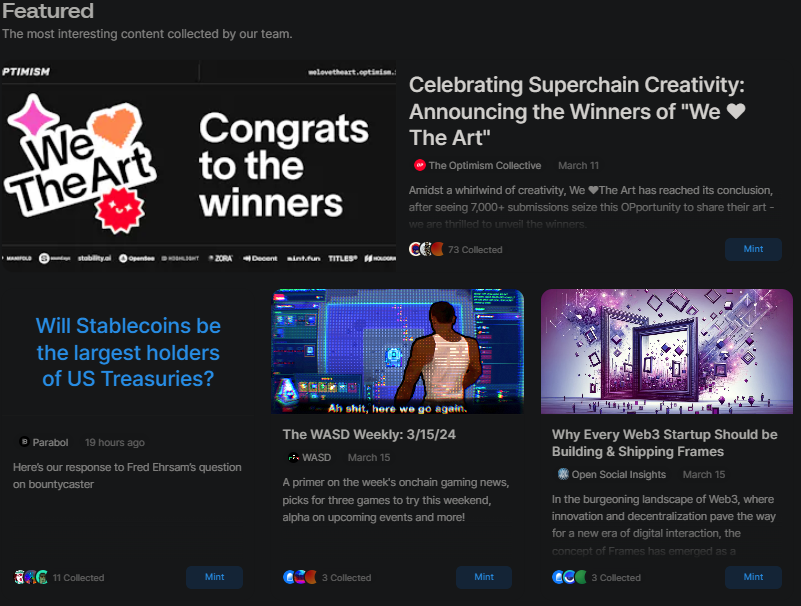
Paragraph lets authors directly leverage their social presence on Farcaster for distribution; it's more self-directed but requires the author to have an established presence on Farcaster already. For me, Paragraph wins.
Many-to-Many
This is the discussion that happens around a writer's content, the discussions people have about it in public on social.
Medium stores comments on the article, which are only seen once a reader has already arrived at an article. Comments don't help readers discover new authors, unless their discovery algorithm includes comment activity. Comments on a social broadcast are isolated and are not accessible from the articles themselves.
Substack Notes leverages microblogging for social proofing but is isolated within Substack network and helps Substack writers grow their Substack following. There is no carryover to wider social media.
Mirror lacks comments of any kind and is entirely dependent on the writer or brand promoting the article elsewhere on social media.
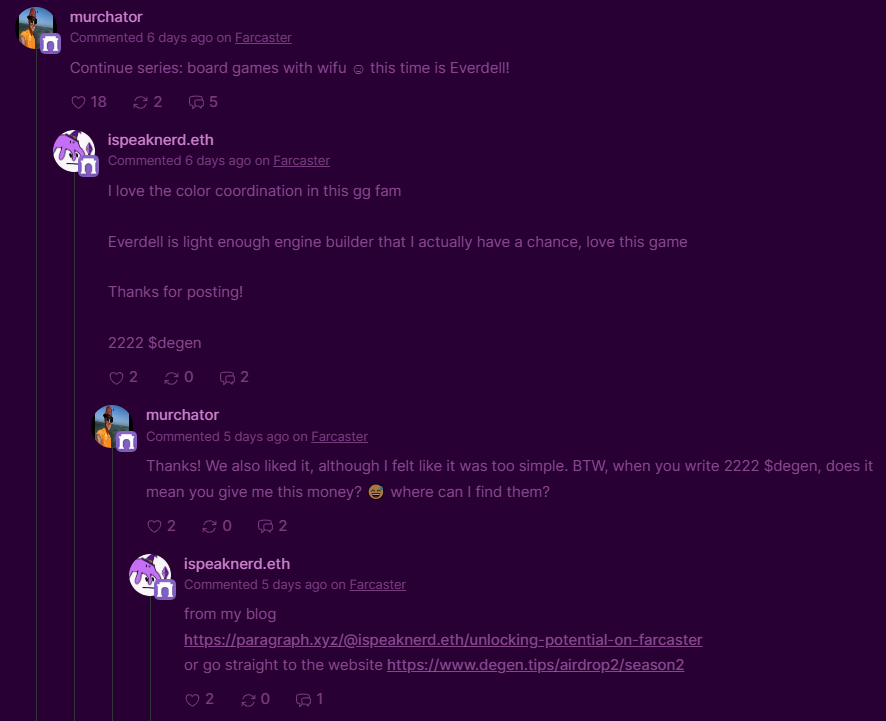
Paragraph captures discussions happening on Farcaster social by putting all casts that mention the article by link as comments on the post. It wins the discoverability race for me.
If you are on Farcaster and thinking of starting a blog, do it on Paragraph. If you already have a following elsewhere and are still growing, don't jump ship.
If you enjoyed this,
Please subscribe 💜
Give me a shout on Farcaster
Come join the /nerdery channel
Share this post with someone who will enjoy it! You earn a referral fee when someone collects this post using your referral link.

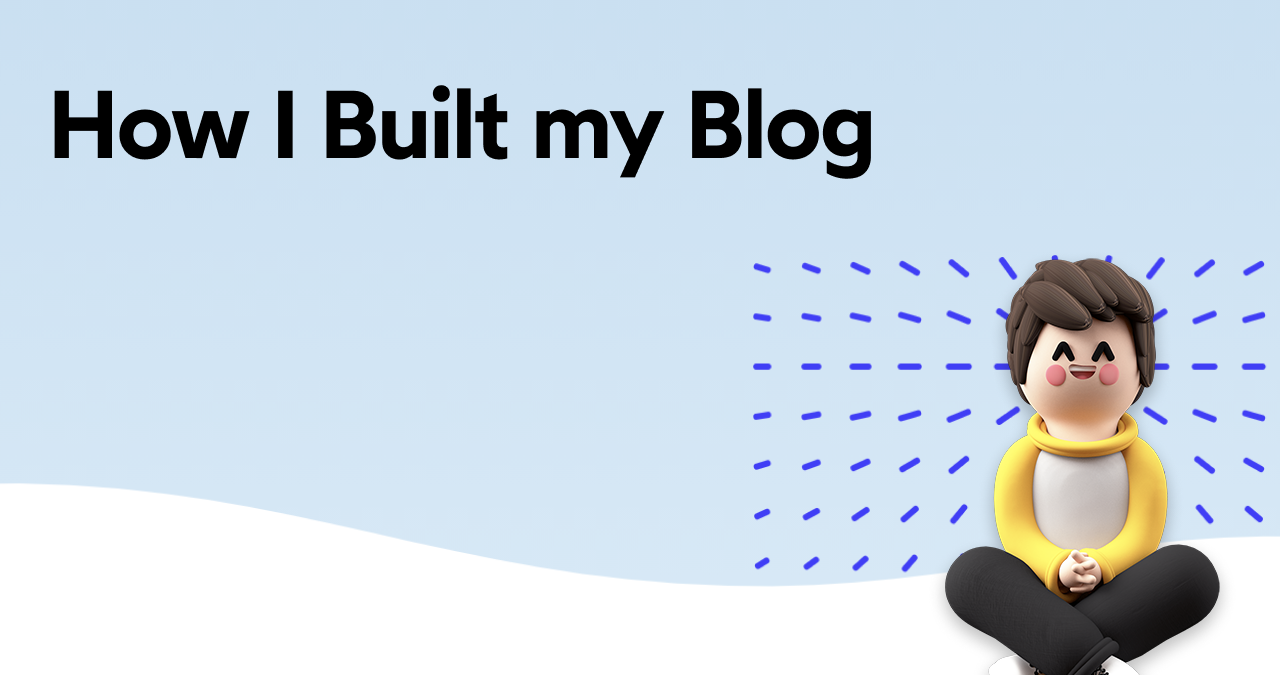





This simplifies the decision.
Unsolicited self-shill, wrote this a month ago, exploring various self-publishing tools avail in 2024 https://paragraph.xyz/@ispeaknerd.eth/where-the-web3-readers-are?referrer=0x3eEFAa9d6e2ab7972C1001D41C82BB4881389257
Awesome! This is great - thanks. 1337 $DEGEN
Thanks fam!
Making a list of the best blog posts and videos about Farcaster. Please reply with your suggestions for degen tips. <3
@raven50mm has been creating a lot of educational Farcaster videos!
🏄🏽🤘🏽 thanks for the tag Chic! Gm 🫡 check out /50mm-collective for more https://zora.co/collect/base:0x704b037190922d805a89735b67ea02a0fd020520/2
Here’s my first one @gigamesh 🚀 https://zora.co/collect/base:0x8210e9a765287293bba72242df1ebea01a2084d9/1
An awesome tip of the hat to @ispeaknerd.eth for https://paragraph.xyz/@ispeaknerd.eth/acculturate-to-accelerate-on-farcaster?referrer=0x3eefaa9d6e2ab7972c1001d41c82bb4881389257
ty! 100 degen
Thanks Taylor! glad it was valueful for you!
other articles: making farcaster content https://paragraph.xyz/@ispeaknerd.eth/unlocking-potential-on-farcaster?referrer=0x3eEFAa9d6e2ab7972C1001D41C82BB4881389257
nice! 100 degen
FC + @paragraph https://paragraph.xyz/@ispeaknerd.eth/where-the-web3-readers-are?referrer=0x3eEFAa9d6e2ab7972C1001D41C82BB4881389257
customizability (and quasi-clients h/t @cameron) with frames + cast actions https://paragraph.xyz/@ispeaknerd.eth/customization-is-coming?referrer=0x3eEFAa9d6e2ab7972C1001D41C82BB4881389257
Also, https://youtu.be/kOBqav5Ysv4?si=6FYUXh-kGAxaWy6r is just nifty
100 degen thank you
I think it is hard and useful work 100 $degen
much appreciated!
🫶🏻
This is my go-to article for helping friends I invite onboard make sense of engagements and interactions on Farcaster. https://paragraph.xyz/@bitfloorsghost/making-a-name-for-yourself-on-farcaster?referrer=0xa312a2a835bdcda893020ce23871470ffd26b990
https://warpcast.com/endureandsurvive.eth/0x847858a0 👌
The onboarding guide to foldspace. Several users have asked me to detail the steps since at this moment is confusing and intricate (working on it, details in post). But hope this guide can be helpful. https://paragraph.xyz/@storming0x.eth/crypto-native-farcaster-onboarding
Shoutout to @ispeaknerd.eth and @paragraph for helping me decide on the platform and sort out the hiccups.
Relevant article, why fc'ers should start on @paragraph if they're new to publishing https://paragraph.xyz/@ispeaknerd.eth/where-the-web3-readers-are
Mapping Infinity
that's super cool. i remember talking in /onchain-gaming about FSM at one point, was that you?
Yeah! I reblogged that article to check out paragraph.
thoughts?
tip me DEGEN if you like what i've been doing to keep /tabletop as an awesome place for nerds to talk about + share their love for board games details in the article for the nerds https://paragraph.xyz/@ispeaknerd.eth/unlocking-potential-on-farcaster?referrer=0x3eEFAa9d6e2ab7972C1001D41C82BB4881389257#h-dollardegen
I only got 40 $degen left. But this is one of my regular stop channels
Appreciate you fam, keep sharing your /tabletop adventures pls 🙏 420 $degen
I was lied to I have 643 $degen more to give 🤝
100 $DEGEN Thanks for making /tabletop my favorite channel
I haven't played games lately but I love that you created this space for us. 256 $DEGEN
thanks fam, cast about it when you do play next!
have a good day
500 $DEGEN, will come back to check my allowance and give it all, I love what you’re doing here on tabletop
200 $DEGEN
33 $degen
100 $DEGEN
Sorry, tried to tip and I guess the $DEGEN season hasn’t unlocked the tips I’ve received yet.
¿Paragraph o Mirror? En este articulo se decantan por Paragraph ¿Teneis alguna experiencia?. Estas herramientas se han adaptado a Farcaster perfectamente. Paragraph te crea un Frame por defecto. https://paragraph.xyz/@ispeaknerd.eth/where-the-web3-readers-are
Interesante ℹ️
I prefer Paragraph over Mirror for many reasons, including: - general UX/UI - discoverability - better formatting/customization options - integration with FC - embedded AI - custom domains - "web 2.5" emphasis (e.g., can import/export emails, making it easier for non-web3 folks to get started)
Hey Danica, just saw this cast on an old article of mine, just published this last week, thought you'd appreciate it. Paragraph vs substack, medium, and mirror https://paragraph.xyz/@ispeaknerd.eth/where-the-web3-readers-are
Cool. Thanks for the pointer. I'm heads-down for the next week or so as I prepare for a project launch, so I'm way behind on my reading. But I'm definitely adding this to my reading queue, and I'll check it out soon. Cheers!
Where the web3 Readers Are
By @ispeaknerd.eth
Finding the best publishing platform for web3 writers. Turns out, it's... https://paragraph.xyz/@ispeaknerd.eth/where-the-web3-readers-are
tysm for the feedback along the way @spaceman-spiff @links @christin @chicago!
Have you connected with Page Dao yet…
Never heard of it, what is it?
Ohh it’s about web3 publishing (and more) since your post mentioned where the web3 readers were o thought maybe ur a writer or lit lover… (some of the earliest wen3 book minting tech, and improving upon for years)😎✍️
I feel like some of the formatting that works well with frames in farcaster isn’t mobile friendly on sites like paragraph.xyz. My iPhone has a nice black oval chopping out prime content in horizontal mode, but in vertical mode, it’s really small text and some of the background formatting g seems off.
@colin formatting issues on mobile ☝️